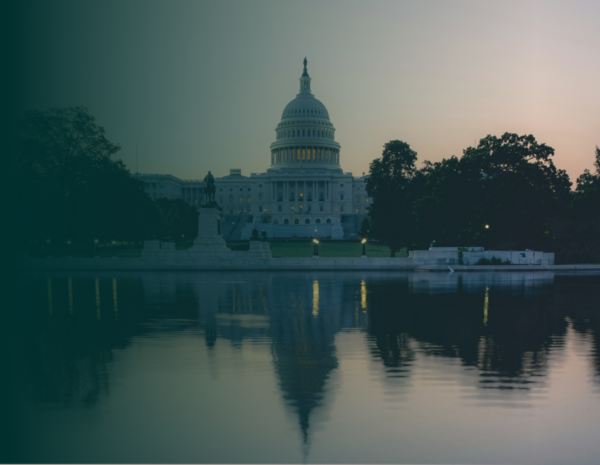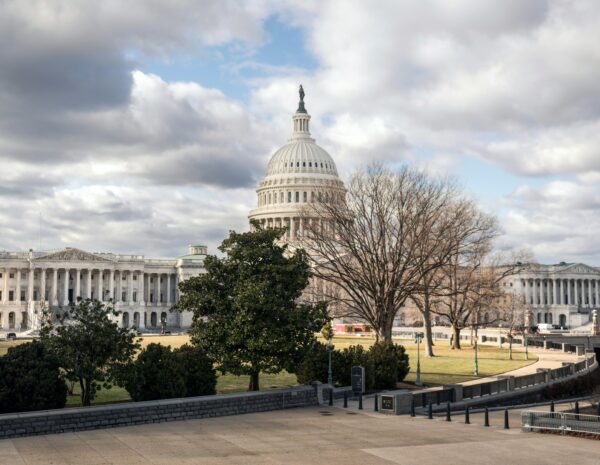Both ordinary citizens and government relations professionals can follow and impact public policy. The legislative process garners a significant amount of time and attention from both groups. This is understandable. The process by which a bill becomes a law is where policy decisions are debated and agreed upon, on both the federal and state levels. However, many citizens and policy professionals pay less attention to a similarly impactful aspect of the public policy process: regulatory rulemaking.
Though often overlooked, the regulatory process has significant impacts on Americans. It also offers opportunities for the public to share feedback and wield influence. For government relations teams and engaged citizens alike, following rulemaking at the state and federal levels is essential. In this article, we explain all there is to know about regulations. Read on to learn what regulations are, how to follow the rulemaking process, and how to impact regulations.
What Exactly Are Regulations?
In general, lawmakers pass bills to make changes to their jurisdiction’s statutes. More often than not, those bills and their associated statutes are fairly descriptive. Regardless, the government must still detail how the statute will be applied. This is where rulemaking comes in. Government agencies use internal expertise and stakeholder feedback to develop regulations detailing the fineries of the law. The rulemaking process updates these regulations.
Here’s a simplified example. State legislatures might pass a law that requires the Department of Marine Fisheries to maintain and publish a list of endangered local fish. Following the passage of this law, the Department must establish how and when they will publish this list. They must also determine what measures they’ll use to determine “endangerment,” and what fish might appear on that list. In future rulemaking, they may change any of these decisions based on the authority granted to them by the legislature to maintain that list.
The scope of the policy choices being made through regulations across U.S. states and the federal government is massive. Further, the nature of the content being considered and the regulatory process are highly complex. These factors lead to less engagement with this key aspect of policymaking. At the same time, the effects of regulatory action are ubiquitous in our daily lives. Regulations might determine what information is presented to us on the food we buy, how much our health systems are paid for providing quality care, and how we access public transportation.
Who Needs to Follow the Regulatory Process?
The aviation, healthcare, and insurance industries face high levels of regulation. Government relations teams working in these industries play a crucial role. In this context, GR teams help their organizations navigate the complex landscape of regulatory rulemaking. This is true at both the federal and state levels. The regulations impacting the aforementioned industries govern everything from consumer protections, to pricing, to safety standards. It’s easy to understand how these regulations have significant business impacts.
At the federal level, agencies like the Federal Aviation Administration and the Department of Health and Human Services issue regulations. Businesses in these sectors are directly impacted by these regulations. Operations, business practices, and profitability can all be affected by regulatory action. In order to sway the process in their favor, GR teams must engage in constructive dialogue with regulatory agencies and policymakers.
This dynamic is similar at the state level. GR teams have an opportunity to connect with local officials with the authority to impact their industries. At this level, GR teams are in a unique position to directly influence policymakers. State-level policymakers often look to local businesses as partners and thought leaders in developing the future of policy in their issue area.
Overall, GR teams must actively participate in the rulemaking process. In doing so, GR teams can:
- Mitigate regulatory risks
- Seize growth opportunities
- Promote effective policies that benefit their organizations, the agencies initiating rulemaking, and the general public
The Regulatory Process
There are two ways to follow the regulatory process on the federal level. Those interested must follow public postings at Regulations.gov and the federal register. At the state level, publication of rulemaking actions is much less uniform. Many states have registers or gazettes that are published regularly with new regulatory updates. These records are often published by the Secretary of State. Other states leave it to individual agencies to publish updates on rulemaking actions. This convoluted process can make tracking regulatory updates challenging.
The rulemaking process itself varies across jurisdictions and agencies. Generally, it includes the steps detailed below.
Statutory Authority
Each agency that participates in rulemaking derives its authority to do so from statute. Sometimes this authority is very specific in scope. For instance, a rent control bill might task an agency with determining and updating what “market rate” rent is in various areas.
Agencies can also be given broad authority. As an example, the Social Security Act gives the Centers for Medicare & Medicaid Services significant control over setting reimbursement rates for healthcare services.
Pre-Rulemaking
Agencies often provide notice of an upcoming rulemaking cycle. Sometimes, they solicit public input ahead of rulemaking via public comments or meetings.
Proposed Rule
Agencies will detail the proposed changes to regulations in what is known as a proposed rule. Regulatory proposals typically include an explanation of the proposed changes. These explanations are presented alongside the proposed changes to the regulatory text.
Public Comment Period
Following the release of the proposed rule, a timeframe is established for the public to provide feedback. During this period, generally 30-90 days, Americans may submit public comments on the proposed rule. State rulemaking actions may also have public hearings, where members of the public can submit comments.
Agency Review
After public comment closes, the agency initiating rulemaking will take time to digest public comments. They may make changes to the proposed rule.
Final Rule
The agency will publish a final rule that accounts for any changes made after the public comment and review periods. The final rule will include effective dates for any of the changes made by the rule. Often, the agency may respond to submitted public comments alongside the issuance of the final rule. This is especially true at the state level.
How to Effectively Impact the Regulatory Process
There’s good news for GR professionals and engaged citizens who want to get involved in the regulatory process. Many of the same principles that apply to effective advocacy at the state house also apply when working with agencies. A strong workflow to monitor and influence regulatory policy will include the following steps.
Discovery
Discovery is key to staying on top of legislative developments. As such, having a process to identify new regulatory actions that may impact you or your organization is essential. Effective discovery ensures you’re never left uninformed.
Analysis
One key aspect of the rulemaking process is ensuring that those in the field have ample time to review and assess proposed policy changes. It’s important to develop a clear and concise understanding of how a proposed action may impact you or those you represent. Aim to do so as quickly as possible following discovery. Strategies for developing this analysis include:
- Conducting comparative political research
- Partnering with allied organizations
- Soliciting feedback from internal stakeholders
Comment
Rulemaking processes are excellent opportunities to partner with agencies to influence policy change. This is especially true at the state level. Submitting comments via email or attending a public hearing are effective ways to ensure your voice is heard. When submitting comments, it’s important to highlight your experience and expertise. Clearly detail your position on the proposed changes and any alternative solutions you might have in mind.
Review and Compliance
The final step of this process is to ensure you’re aware of when final rules are published. Communicate with stakeholders about the impact of your influence. Detail any impacts on your organization. Finally, begin the process to ensure compliance with any rule changes.
Exact details of how this workflow operates in practice will, of course, vary by organization. Use this guide as a checklist to ensure that you have the core functions of regulatory monitoring and engagement covered.
Impacting the Regulatory Process
Active engagement in the rulemaking process is key for individuals, organizations, and industries seeking to establish influence and monitor policy risk. With active participation, stakeholders will stay informed and may be able to influence policy. This involvement will set them up as thought leaders and field-based partners for policymakers. Developing expertise in this realm will lead to better policy, which is what the rulemaking process is there for.
More Resources for Public Policy Teams
Plural for Policy Tracking
Plural is the policy tracking and stakeholder engagement tool of choice for both government relations professionals and concerned citizens alike. With Plural, you’ll:
- Access superior public policy data
- Be the first to know about new bills and changes in bill status
- Streamline your day with seamless organization features
- Harness the power of time-saving AI tools to gain insights into individual bills and the entire legislative landscape
- Keep everyone on the same page with internal collaboration and external reporting all in one place
Create a free account or book a demo today!



